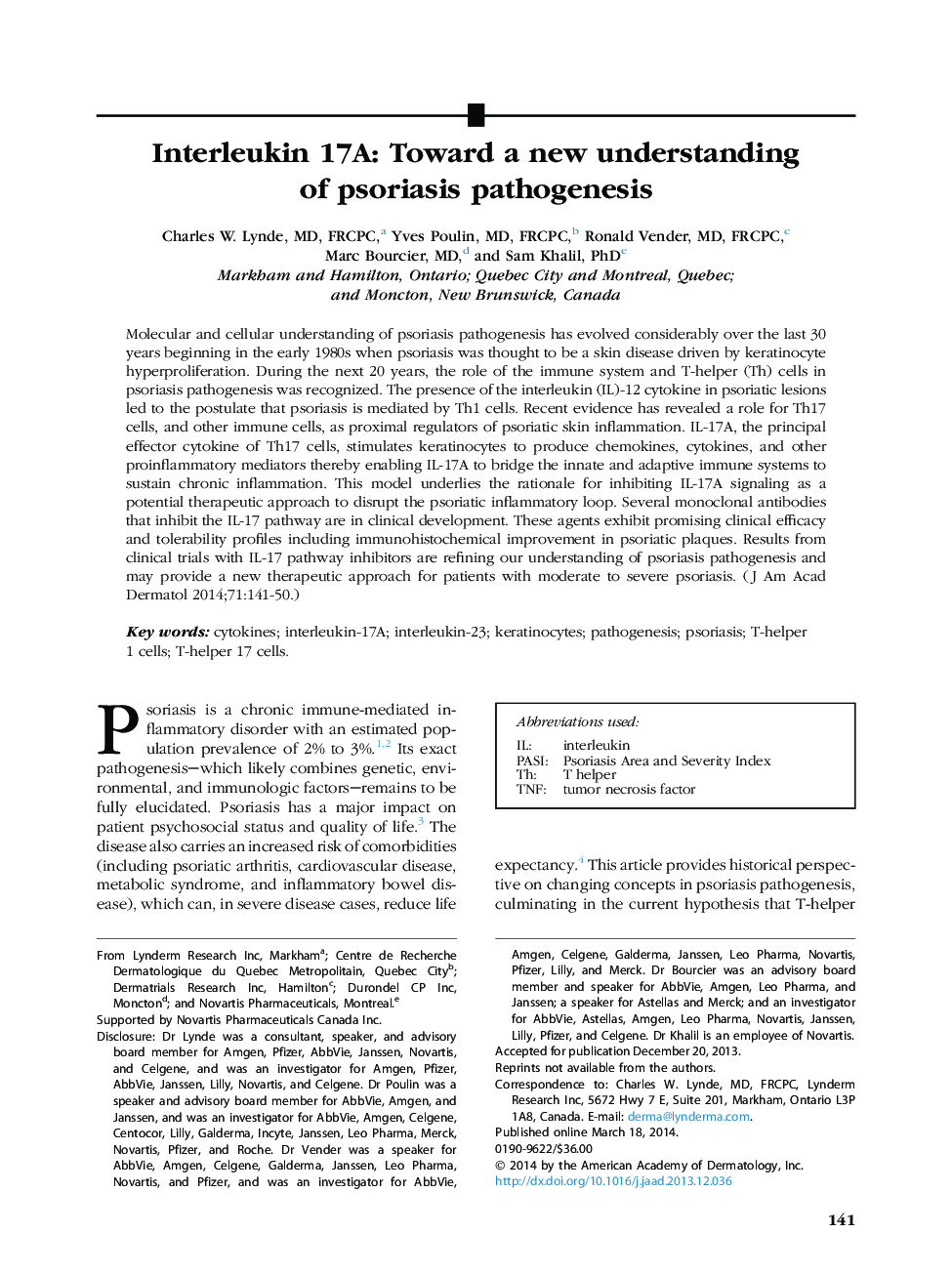| کد مقاله | کد نشریه | سال انتشار | مقاله انگلیسی | نسخه تمام متن |
|---|---|---|---|---|
| 6072035 | 1587535 | 2014 | 10 صفحه PDF | دانلود رایگان |

Molecular and cellular understanding of psoriasis pathogenesis has evolved considerably over the last 30 years beginning in the early 1980s when psoriasis was thought to be a skin disease driven by keratinocyte hyperproliferation. During the next 20 years, the role of the immune system and T-helper (Th) cells in psoriasis pathogenesis was recognized. The presence of the interleukin (IL)-12 cytokine in psoriatic lesions led to the postulate that psoriasis is mediated by Th1 cells. Recent evidence has revealed a role for Th17 cells, and other immune cells, as proximal regulators of psoriatic skin inflammation. IL-17A, the principal effector cytokine of Th17 cells, stimulates keratinocytes to produce chemokines, cytokines, and other proinflammatory mediators thereby enabling IL-17A to bridge the innate and adaptive immune systems to sustain chronic inflammation. This model underlies the rationale for inhibiting IL-17A signaling as a potential therapeutic approach to disrupt the psoriatic inflammatory loop. Several monoclonal antibodies that inhibit the IL-17 pathway are in clinical development. These agents exhibit promising clinical efficacy and tolerability profiles including immunohistochemical improvement in psoriatic plaques. Results from clinical trials with IL-17 pathway inhibitors are refining our understanding of psoriasis pathogenesis and may provide a new therapeutic approach for patients with moderate to severe psoriasis.
Journal: Journal of the American Academy of Dermatology - Volume 71, Issue 1, July 2014, Pages 141-150